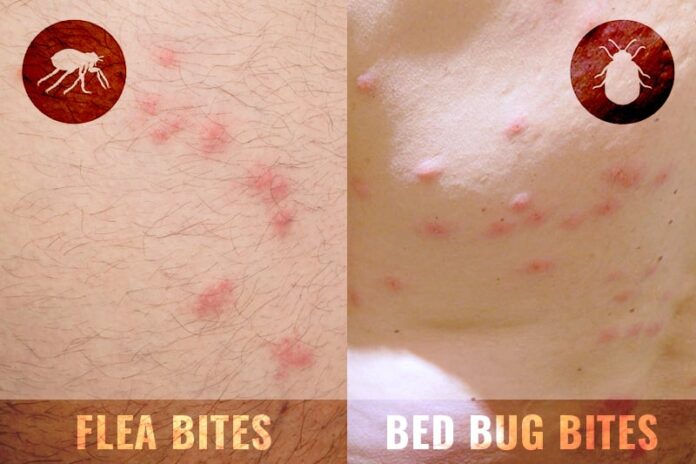
Bed Bug Bites Vs. Flea Bites: Understanding the Differences
Bed bug bites and flea bites are often mistaken for one another due to their similar appearance and symptoms. However, understanding the differences between these two types of bites is important to ensure proper identification and effective treatment. In this article, we will delve into the characteristics of both bed bug bites and flea bites, their distinct features, and how to distinguish between the two.
1. Appearance:
Bed Bug Bites: Bed bug bites typically appear as small, red, itchy welts on the skin, often forming a line or cluster. They are usually flat or slightly raised, and can be found on any part of the body.
Flea Bites: Flea bites tend to be smaller than bed bug bites, with a red center surrounded by a lighter halo. These bites are often found in clusters or groups of three or four, commonly on the lower legs, ankles, and feet.
2. Timing:
Bed Bug Bites: Bed bug bites often show up several hours to a few days after being bitten. The reaction time can vary depending on an individual’s sensitivity to the bites.
Flea Bites: Flea bites are known for their immediate itching and discomfort. They can become evident within minutes after being bitten, thanks to the flea’s saliva irritating the skin.
3. Itching and Pain:
Bed Bug Bites: Bed bug bites generally cause intense itching, which may persist for several days. The degree of discomfort can vary among individuals. However, bed bug bites are not usually painful.
Flea Bites: Flea bites commonly cause intense itching, which can lead to a cycle of scratching and potentially even secondary infections if the skin is broken. In some cases, flea bites can be painful due to the flea’s bite puncturing the skin.
4. Distribution and Location:
Bed Bug Bites: Bed bug bites are often found in a linear pattern following the exposed areas of the body during sleep, such as the arms, shoulders, neck, and face. However, there can be variations in the distribution depending on the circumstances.
Flea Bites: Flea bites are commonly found around the lower legs, particularly on the ankles and feet. However, flea bites are not limited to these areas as fleas can jump onto other parts of the body.
5. Bite Frequency:
Bed Bug Bites: Bed bug bites generally occur in a repeated pattern, as these pests tend to feed every few days. Therefore, multiple bites in the same area, forming a line or cluster, can be a telltale sign of bed bugs.
Flea Bites: Flea bites are often seen in clusters or groups of bites, usually in areas of the body that come into direct contact with infested animals or surfaces. Fleas can bite multiple times in a short period, resulting in numerous bites.
6. Presence of Biting Insects:
Bed Bug Bites: Bed bugs are visible to the naked eye, but they are elusive pests that are often difficult to find. They are usually active during the night and hide in tiny cracks and crevices during the day.
Flea Bites: Fleas are small, agile insects that are usually visible to the naked eye, especially in their adult form. They can often be found on infested animals or in their environment, such as carpets, bedding, or upholstery.
7. Prevention and Treatment:
Bed Bug Bites: Preventing bed bug infestations includes being cautious while traveling, inspecting hotel rooms, and regularly washing and drying bedding on high heat. If an infestation occurs, professional extermination is usually necessary.
Flea Bites: Preventing flea infestations involves regularly treating pets with veterinarian-approved flea control products, washing pet bedding regularly, and vacuuming frequently to remove any potential fleas or eggs. Flea treatments for both pets and their environment may be required if an infestation occurs.
In conclusion, while bed bug bites and flea bites may share some similarities in appearance and symptoms, understanding their distinctions is crucial in determining the source of an infestation, implementing appropriate control measures, and seeking suitable treatment. It is always advisable to consult a medical professional or pest control expert for an accurate diagnosis and effective solution.


















